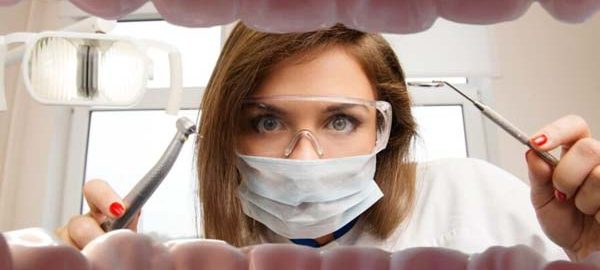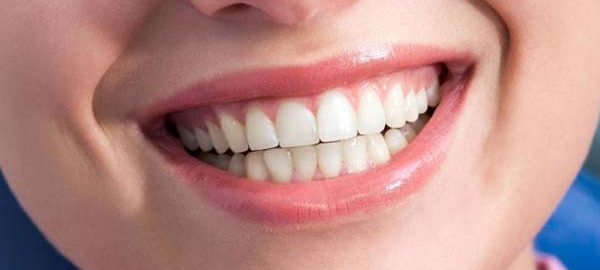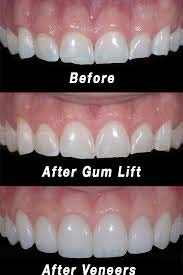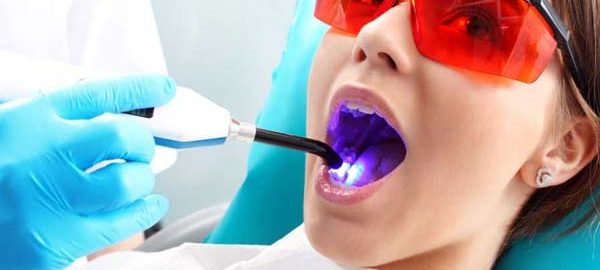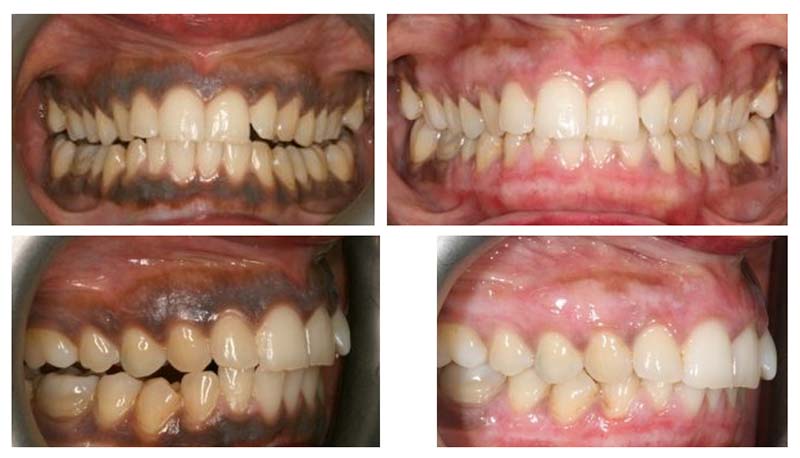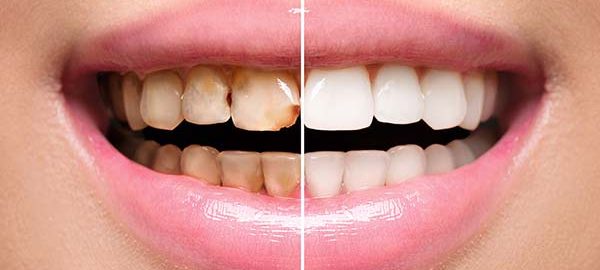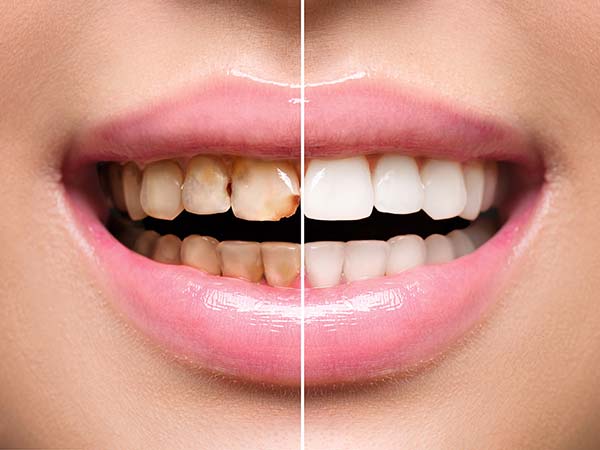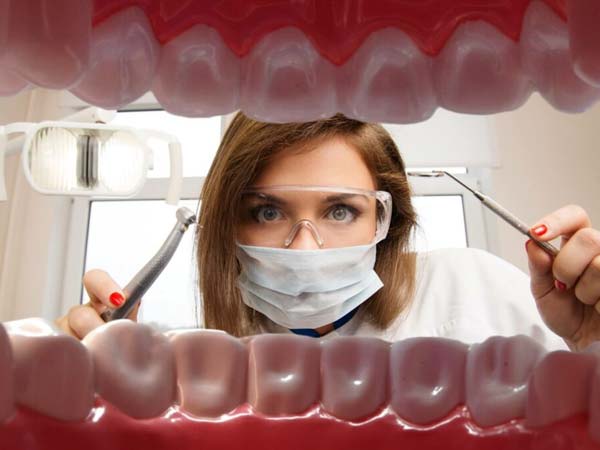
Sometimes, periodontal surgery may be needed to treat certain gum diseases and conditions, such as gingivitis or periodontitis. This type of surgery is commonly known as gum surgery.
The procedure aims to treat the gum disease and any damage it may have caused by:
- regrowing damaged bones and tissues
- preventing tooth loss
- reducing gum gaps between teeth, known as black triangles
- reshaping the jaw hone to lower the risk for bacterial growth in bone crevices
- eliminating bacteria and infection
What conditions can gum surgery treat?
Periodontal surgery can treat many conditions, including gingivitis.
Gum diseases such as gingivitis and periodontitis may require surgical treatment.
Gingivitis is a mild form of gum disease that can cause gum redness, swelling, and bleeding. Most often, gingivitis occurs due to poor oral hygiene, plaque, and tartar buildup. Professional treatment can reverse the condition.
Periodontitis is a more severe form of gum disease in which gingivitis has worsened and advanced, leading to an inflammatory response that destroys bone and tissues.
During this inflammatory process, the gums begin to separate from the teeth. This causes spaces called pockets to develop, which in turn trap bacteria and lead to infection.
As a result, tooth loss and bone damage can occur.
Types of surgical procedures
Which kind of surgery we perform depends on the type and severity of the gum disease.
Before surgery, we might give the gums a deep clean. One procedure known as deep scaling can remove tartar and bacteria from teeth and gums.
Another procedure known as root planing can smooth the surfaces of the roots of the teeth, meaning that there are fewer places for tartar and bacteria to build up. This procedure also removes any tartar that is on the root.
Deep scaling and root planing usually occur at the same time.
Flap surgery
Flap surgery is especially helpful for people who have tartar deposits in deep pockets. The procedure involves lifting the gums off of the teeth to remove tartar buildup.
After the surgeon has cleaned the area and removed the tartar, they will stitch the gums into place to fit around the teeth. Sometimes, the bone may require reshaping during this procedure.
Bone grafting
When the bone that surrounds the root of the tooth is damaged or destroyed, a person may need a bone graft. This procedure involves replacing the damaged bone with new bone. This bone may be the person’s bone, a manufactured bone, or donated bone.
The goal of bone grafting is to hold the tooth in place and help it to regrow.
Guided tissue regeneration
During this procedure, we will place a small piece of mesh-like material between a person’s bone and gum tissue.
The material prevents the gum from growing into space where bone should be, allowing the bone and connective tissue to regrow.
Tissue grafting
The type of surgery performed will be based on several factors, such as the condition of the gums.
A lowered gum line, known as gum line recession, is caused by the loss of gum tissue and may require soft tissue grafting to reduce the risk of further damage.
During this procedure, a dental surgeon typically removes tissue from one part of the body and re-attaches it to the area where the gum has receded. The tissue often comes from the roof of the mouth.
Tissue grafting not only reduces the risk for further damage but also covers any exposed roots.
Other treatment options include:
- Laser therapy: Although no current evidence fully supports laser therapy, some dentists use it to reduce the size of pockets and restore damaged connective tissue.
- Tissue-stimulating proteins: This procedure involves using a protein-containing gel to stimulate bone and tissue growth.
Preparing for gum surgery
Before a person has a gum surgery we will perform a pre-operative exam to make sure it is safe to have surgery.
During this exam, our team will likely:
- take a medical history review and do an exam
- examine the teeth, mouth, and jaw to check for stability and health
- check for any infections, abscesses, or other lesions that could make healing from surgery more complicated
- discuss the risks and benefits of the operation, and receive permission or consent to move forward with the surgery
What happens during surgery
Depending on the type of procedure, a range of things may take place.
Most gum surgery procedures take around 2 hours to complete.
In some cases, the surgery will require a person to be asleep or partially asleep during the procedure. Other times, the surgery only involves the use of a local anesthetic to numb the gums. The injection of the numbing medication can be mildly uncomfortable.
During the procedure, we use sterile equipment, including instruments and drapes, to lower the risk of infection.
After making small incisions or cuts along the gum line, our dentist will lift the gums away from the teeth. This allows us to see the roots better so that we can remove and clean away any tartar, plaque, or infection.
Following this deep cleaning, we can perform other procedures, such as gum reshaping, bone regeneration procedures, or other planned procedures.
Once the planned dental surgery is complete, the surgeon will stitch the gums back into place, using fine thread stitches. We will remove the stitches 7 to 10 days after surgery.
Recovery
Antiseptic mouthwash may help to prevent infection after surgery.
Following any dental procedure, we will provide detailed instructions on how to achieve the best possible recovery. Recovery times will depend on the extent of the procedure taking place
Typically, patient will require pain relief medications in the days after gum surgery.
We may also recommend:
- using an antiseptic mouthwash to keep the area clean and to avoid infection
- avoiding strenuous exercise
- eating soft foods in the days following surgery
- not smoking
The next appointment will be scheduled after 1–2 weeks time. During this appointment, the surgeon will check how the gums are healing and, if required, remove any stitches.
A person’s gums will look and feel different after surgery. The gums and teeth will heal, tighten, and become firmer and stronger. Some people may have tooth sensitivity to hot or cold temperatures and may find relief by using desensitizing toothpaste.
Dentists will discuss a follow-up schedule to maintain good oral health in the future.
Can gum disease be prevented?
Since gum disease is caused by bacterial overgrowth, plaque, and tartar buildup, proper oral hygiene is usually effective in preventing and reversing the condition.
In most cases, seeking regular dental care accompanied by brushing and flossing two times a day is enough to prevent gum disease from occurring.
Outlook
If left untreated, gum disease may lead to the development of a variety of health problems, such as cardiovascular disease, diabetes, and pre-term, low-birth-weight babies.
Gum disease can also become a serious health condition affecting the teeth, gums, and bones, leading to infection and bone and tissue death. This may require extensive surgery to repair and treat the condition.
Reducing risk factors, maintaining a good oral hygiene, and keeping routine dental appointments can reduce the risk and severity of gum disease.

